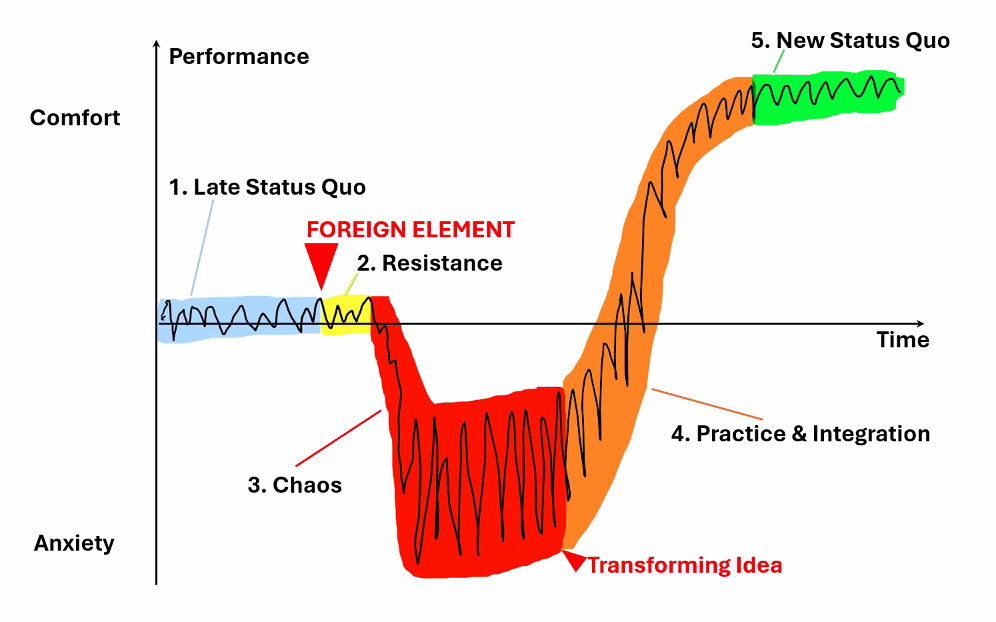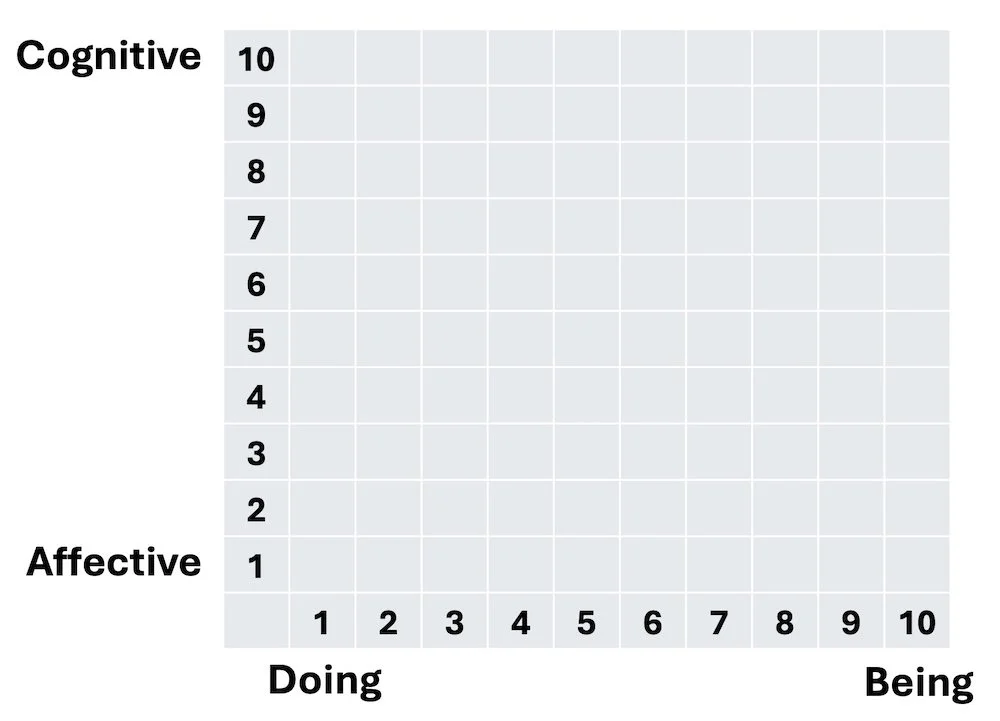It is not easy to navigate the ups & downs of life. This training offers practical approaches to help you process and think through some of life’s challenges and difficult seasons. It is designed to engage you in your own personal journey and to equip you to support others in their journey. Together, we will look at 5 aspects of how we process change and navigate trials in our lives.
THE GRAPH ABOVE SHOWS THE TYPICAL JOURNEY WHEN FACING A CHALLENGE FROM ANXIETY TO COMFORT OVER TIME
1.LATE STATUS QUO
Life is steady. It may not been perfect, BUT:
It’s KNOWN.
It’s WORKED.
It’s PREDICTABLE.
FOREIGN ELEMENT:
Some sort of CHANGE is introduced. It could be WELCOME or UNWELCOME. It could be an IDEA, a DESIRE, a RELATIONSHIP, or an EVENT.
2.RESISTANCE
Life becomes UNFAMILIAR or UNCOMFORTABLE. We resist the CHANGE. The change may be TRAUMATIC, producing a TRAUMA response (Fight, Flight, Freeze). Or we may try to DENY, PRETEND, IGNORE, or RETURN.
3.CHAOS
Life becomes CHAOTIC, unknown, and insecure. You may become restless, numb, powerless, and confused. The chaos can be isolating and depressing. You may feel desperate, or volatile, and begin questioning everything.
TRANSFORMING IDEA:
Some sort of transforming idea emerges that gives you: a glimmer of llight, a possible path, a sense of hope. You begin to move toward acceptance and start to embrace the idea of new possibilities.
4.PRACTICE & INTEGRATION
Life has changed and you have accepted it. Your perspective has shifted toward resolution. You have become more open. You move forward, learn, grow, and begin to experiment with alternative paths and options.
5.NEW STATUS QUO
Life begins to stabilize. Over time, you have less anxiety. You experience more comfort and confidence. The future seems brighter and you consider new dreams and possibilities.
CADB Scale
Where were you in the moment?
FOR DISCUSSION:
What is your typical response to trauma or threats? (Fight, Flight, Freeze)
Where would you place yourself on the change graph? (In status quo, Resisting a new element, In the unknown of limbo/confusion/chaos, Forming new ideas and practicing, Arriving at a new status quo)
In your situation, where are you on the CADB graph? (how much is in your head vs gut, and how much is in 'doing' vs 'being')
Which people, places, or practices do you turn to when you are at the place of resisting change or falling in limbo? Where can you go to have BE WITH time where there is no agenda, prescriptions, or judgments?
Adapted from: Virginia Satir’s “Process of Change Model” and CJ Malone’s “CADB Functioning Graph”
Author: Brian Schwammlein • Posted: April 2025
Event: Summer Training 2024














